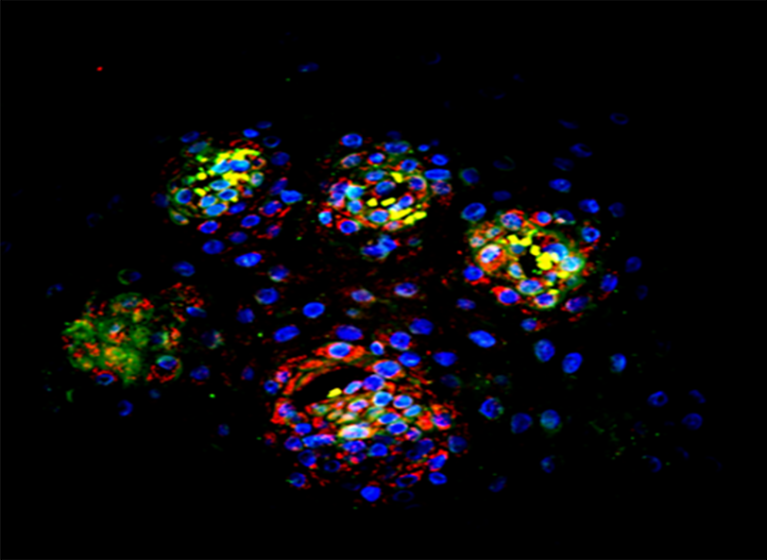
For many patients, there are significant barriers to being diagnosed with eosinophilic esophagitis (EoE) and finding a treatment plan that works. But new research on IgG4 antibodies could help identify patients’ EoE triggers, leading to more precise identification and elimination earlier in the diagnostic process.
Emily McGowan, MD, PhD, an allergist at UVA Health Children’s, has researched EoE for over a decade. Much of her research has centered on the pathophysiology of EoE and examining non-invasive methods for diagnostics. This research could help answer questions about both.
The National Institutes of Health (NIH) awarded McGowan a multi-million dollar grant to further define the role of IgG4 antibodies in EoE. This research could lead to developing novel diagnostics and therapies.
“Generally, we think of IgG4 as being an indicator of tolerance in patients with allergies, but in the case of EoE, IgG4 levels are typically higher. And, IgG4 appears to be located in the same area as food proteins within the esophageal tissue,” McGowan shares. Based on this research, food-specific IgG4 proteins appear to be a relevant feature in EoE and may contribute to the inflammatory response in this disease.
The Role of Food Allergens
Eosinophilic esophagitis is caused by a combination of factors. There’s a genetic component, an environmental catalyst, and an immune response that causes inflammation in the esophagus. This inflammation leads to the symptoms of EoE, like dysphagia.
Food allergens are a common cause of this inflammation. And while EoE remains rare in the general population, nearly 5% of patients with food allergies will develop EoE. But many aren’t even aware.
“They don’t realize how much they’ve been changing their behavior. They take smaller bites, they drink lots of water when they eat, and they don’t really connect it. Then when you start asking questions, they start to realize they’ve been making these adaptations,” McGowan says.
Because the inflammatory response to food that occurs in EoE isn’t the more obvious anaphylactic-type reaction, figuring out the root cause can be challenging. Currently, patients who undergo dietary therapy for their EoE have to have multiple endoscopies to identify their food triggers. McGowan hopes that this research on IgG4 could pave the way for better diagnostic tests to identify these food triggers.
Barriers to Diagnosis & Treatment
Currently, diagnosing and treating eosinophilic esophagitis requires multiple endoscopies to look for eosinophils. This isn’t an easy process for any patient, but it’s especially difficult in younger children. For pediatric patients who don’t live near a children’s hospital, this can be impossible.
In earlier research, data appeared to indicate that living in a rural area was protective against EoE. But additional data clarified what was really going on.
“The biggest difference was actually lack of access to pediatric specialists,” McGowan explains.
Similarly, right now poverty appears to be protective. But McGowan feels that beneath the surface, that too may be a result of underdiagnosis due to lack of access.
Finding the Easiest Route for Patients
For the providers in the EoE program at UVA Health Children’s, one of their main focuses has been making diagnosis and treatment as easy as possible.
Some options that improve patient access include:
- Unsedated transnasal endoscopies
- Esophageal string test diagnostics
- Multidisciplinary care
- Pediatric to adult healthcare transition program
For many of these diagnostic options, UVA Health Children’s is the only regional provider. But research like McGowan’s is looking for even easier diagnostic tests. And with EoE, the sooner, the better.
Rising Cases of EoE
When there’s a significant increase in cases of a disorder, it could simply be due to better diagnostics and awareness. Or, the number of cases could actually be increasing. For EoE, it appears that both scenarios may be true. As cases continue to increase and more providers are trained to recognize the early signs of EoE, more accessible diagnostic tests will ultimately help improve access to care — and timely treatment — for many families.
Referring Your Patient to UVA Health Children's for EoE:
When you refer a patient to us, you can expect:
- Care that's multi-disciplinary and complete
- Visits that address multiple concerns
- Full test results and reports following appointments and procedures
- Communication regarding your patient’s ongoing care